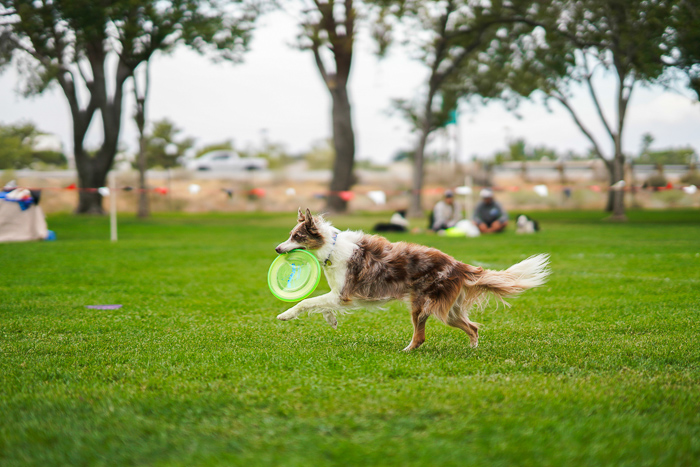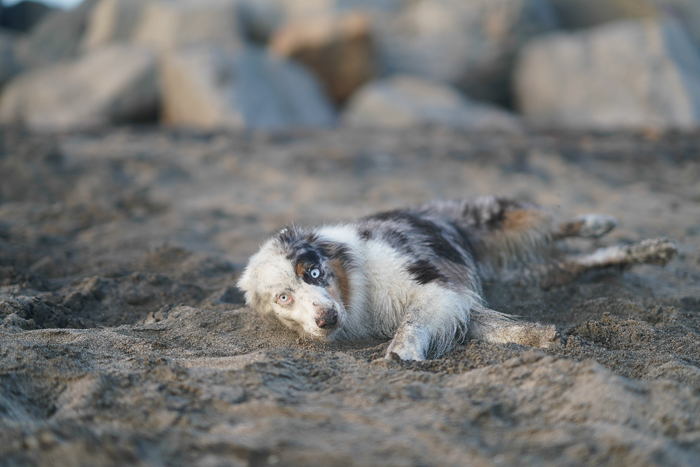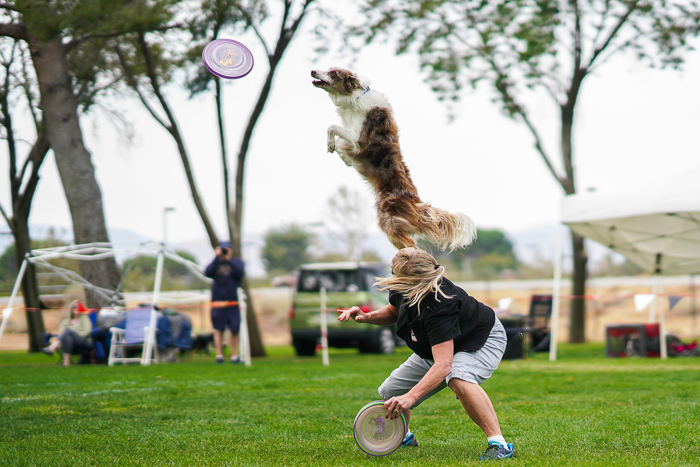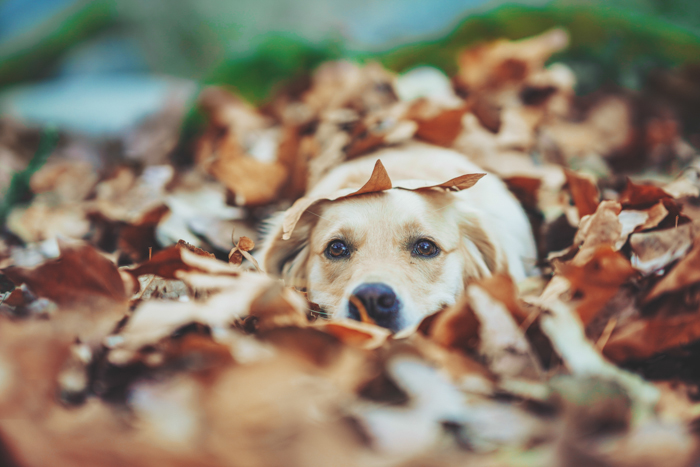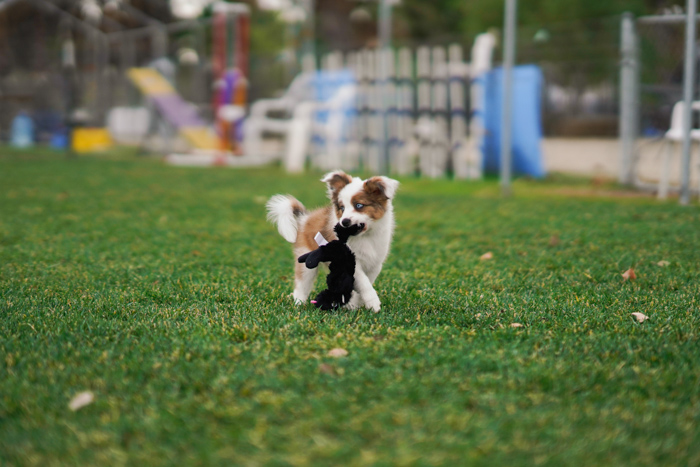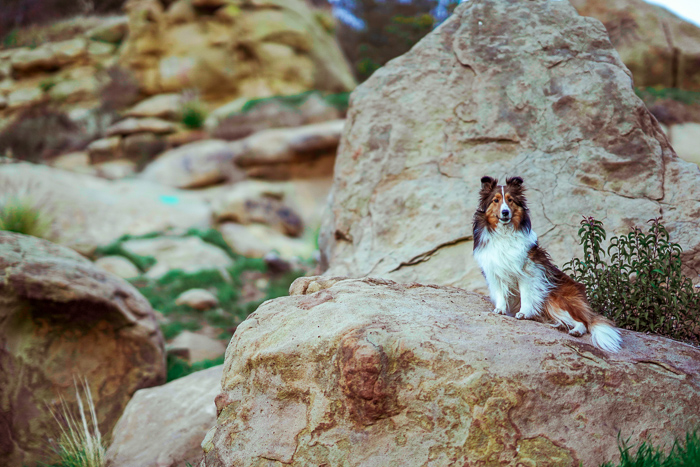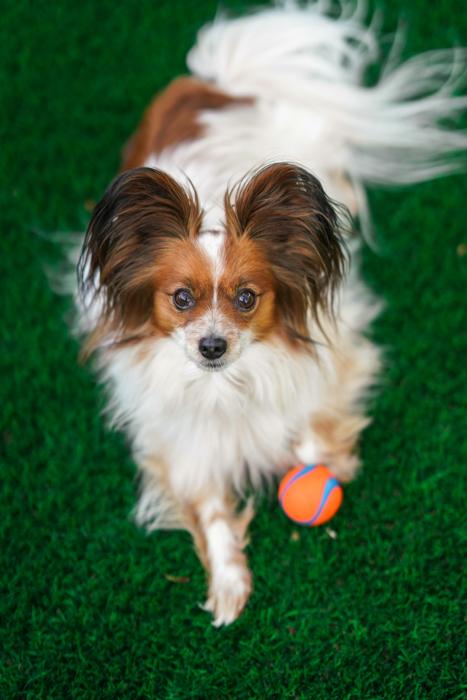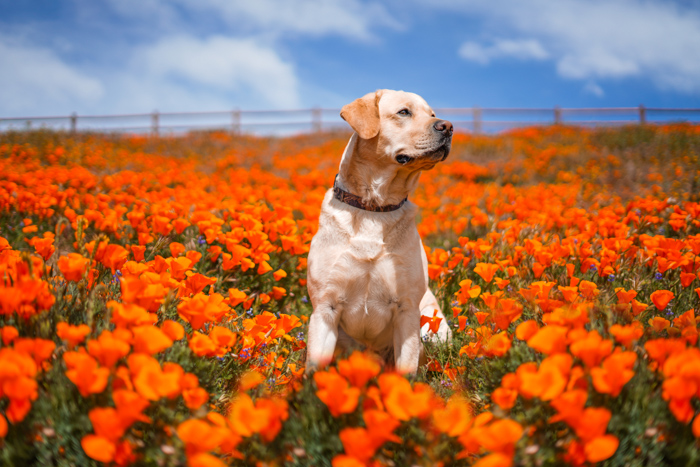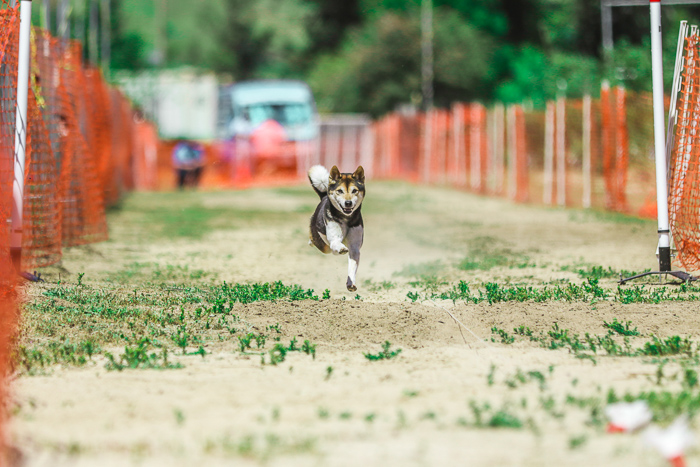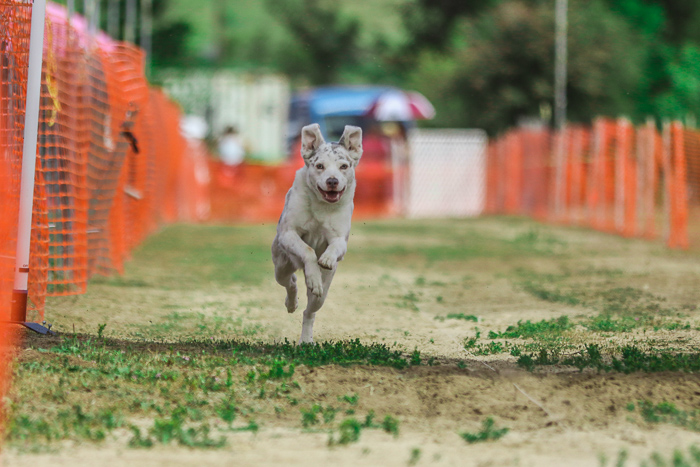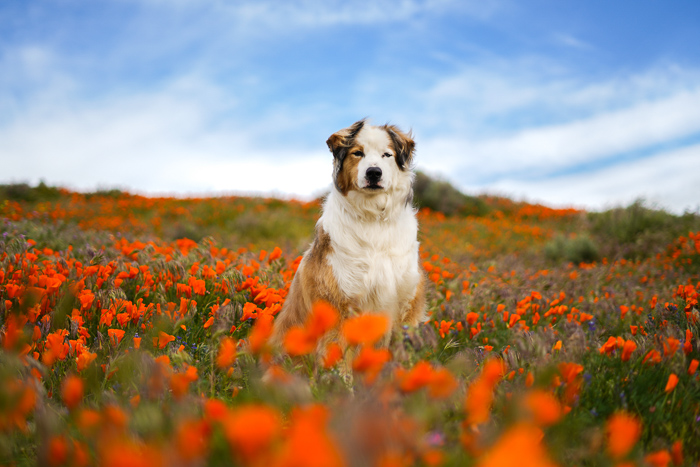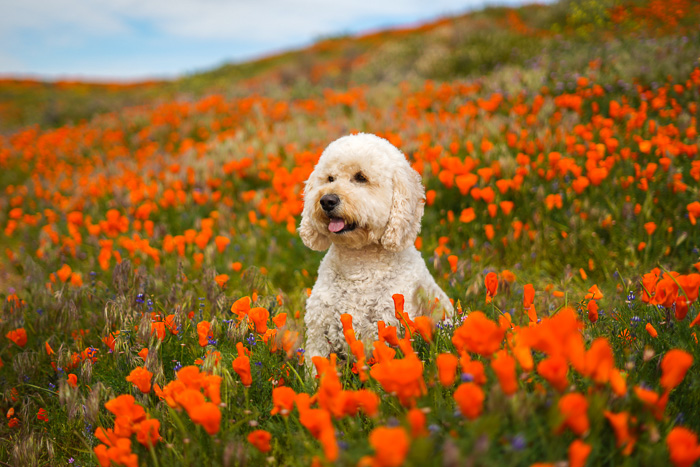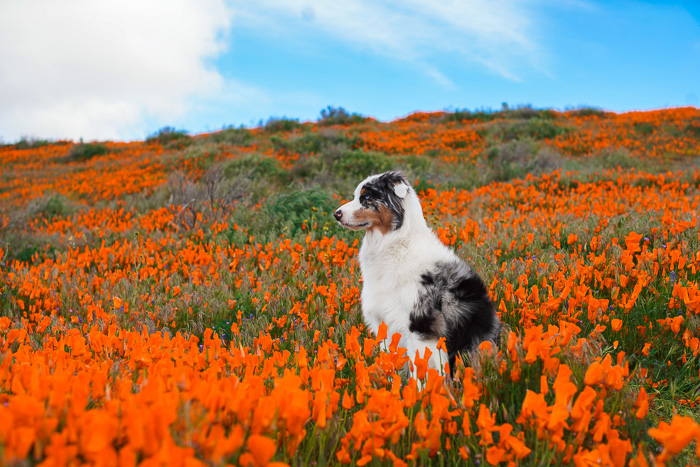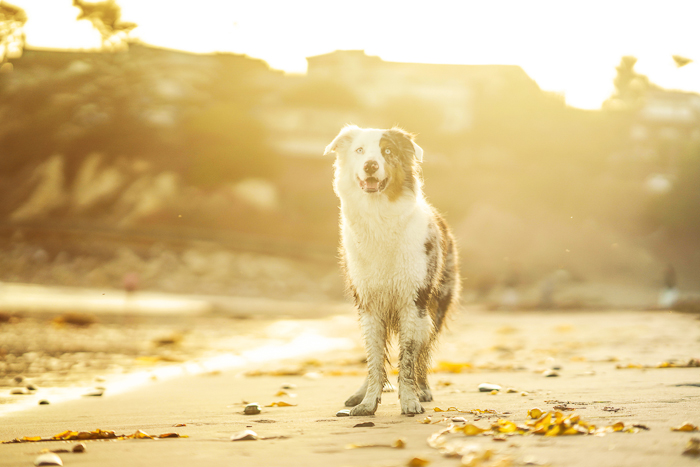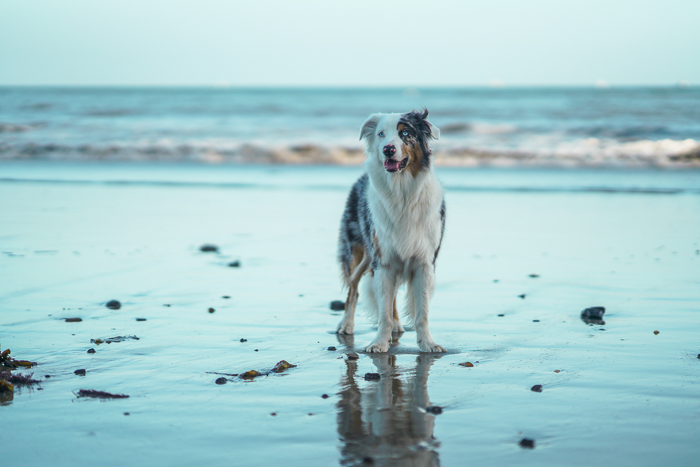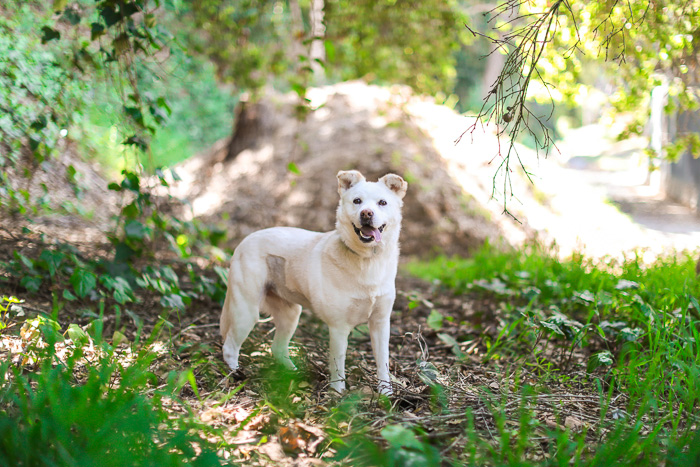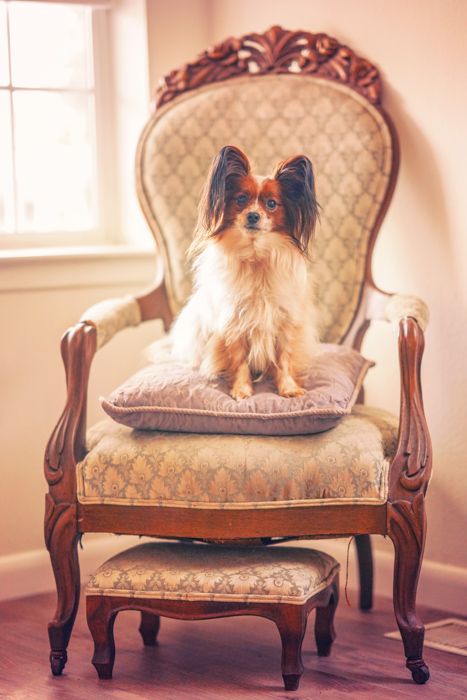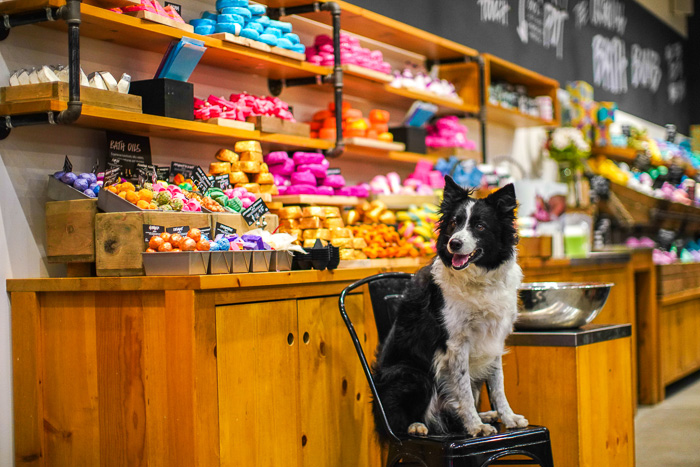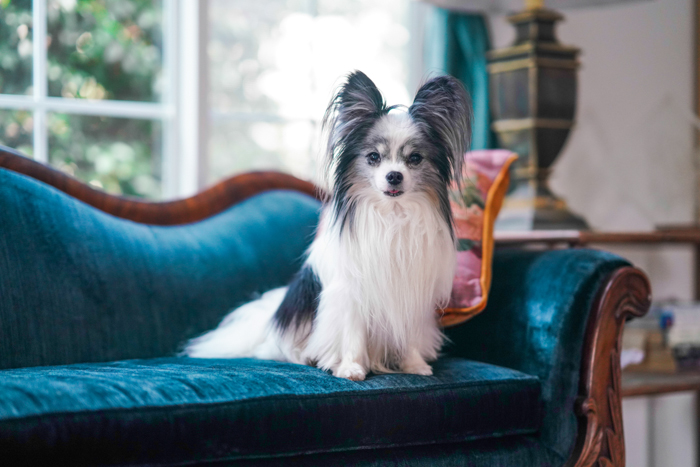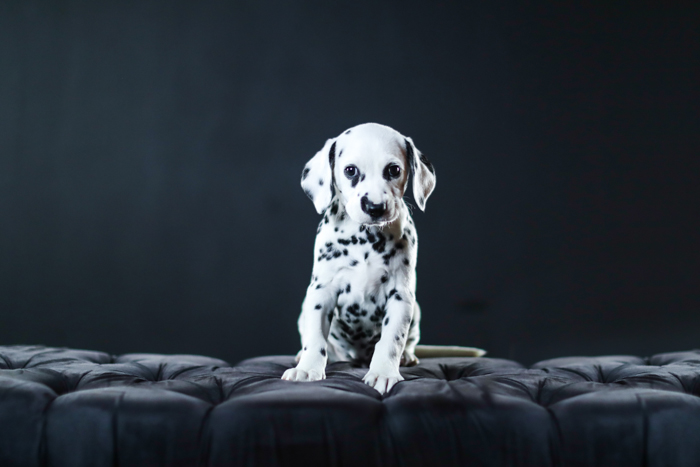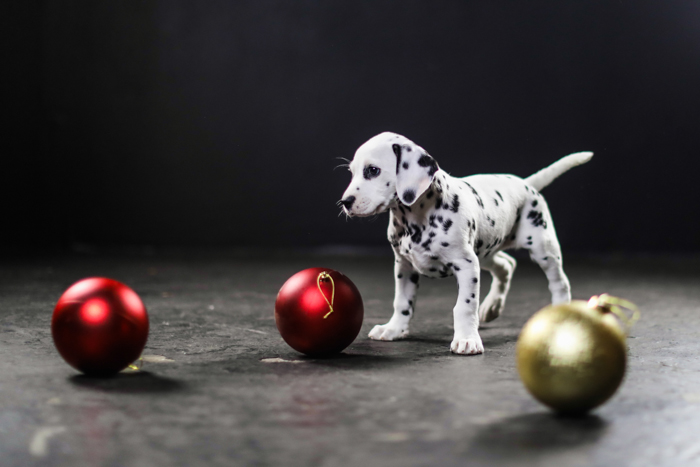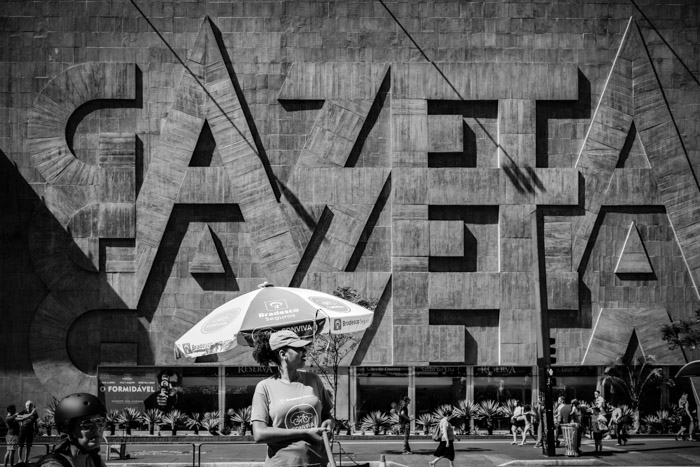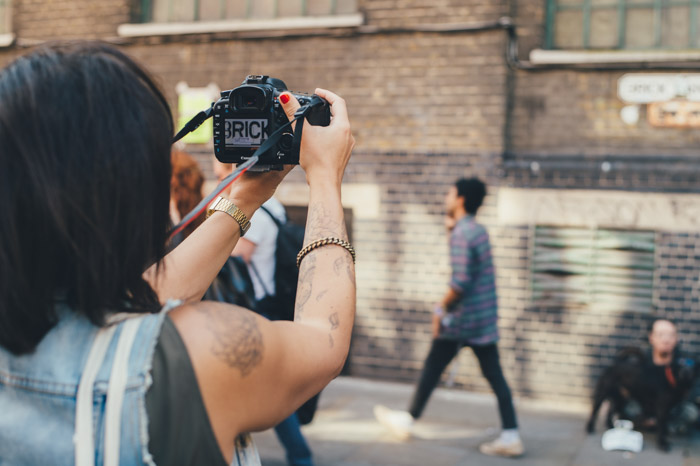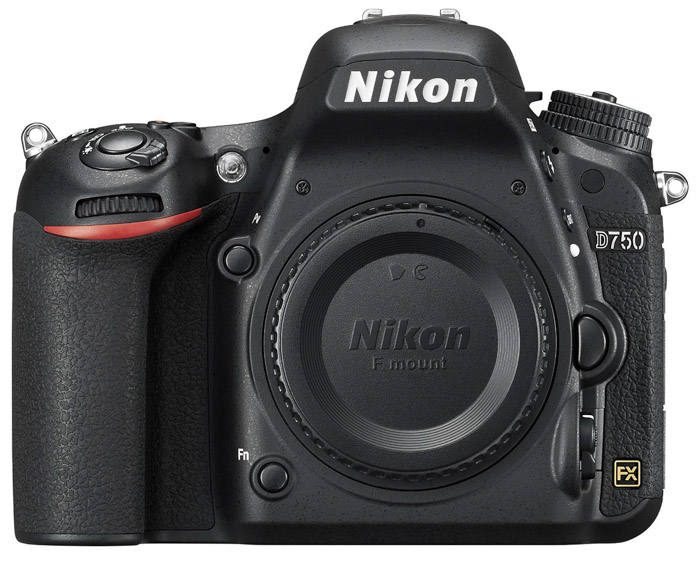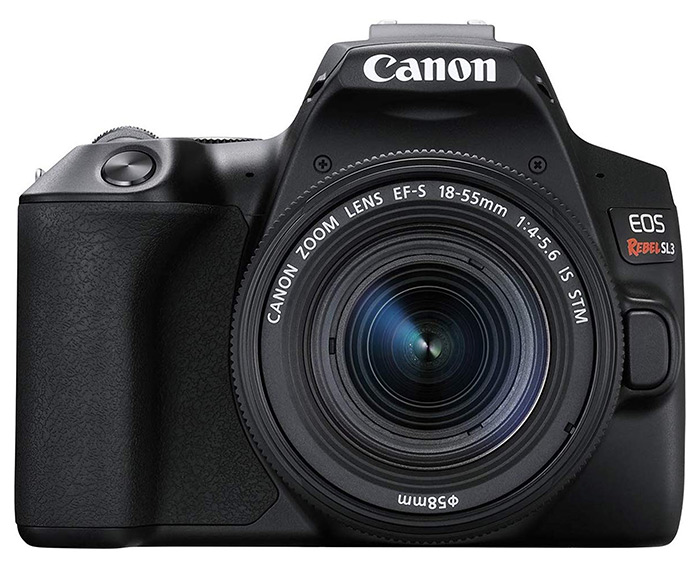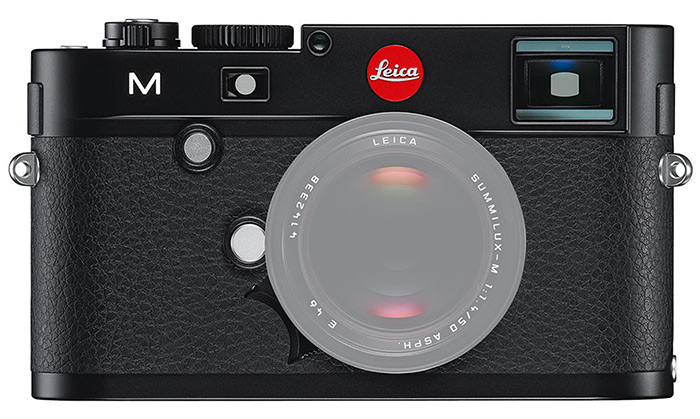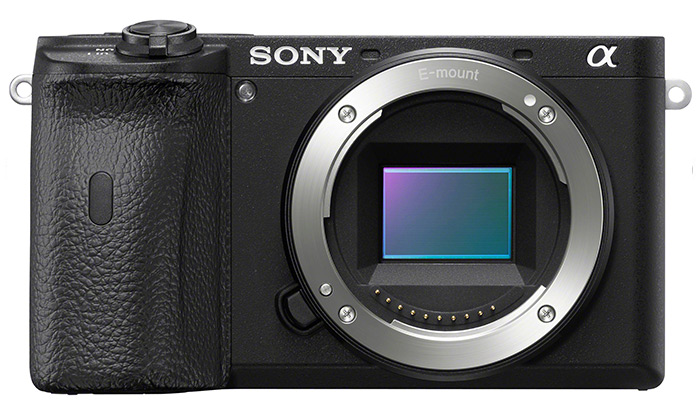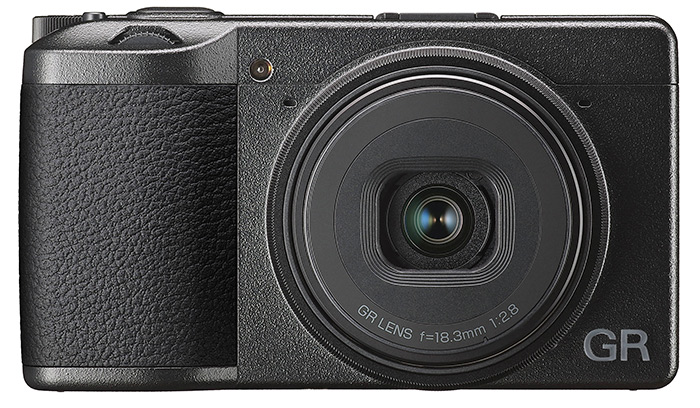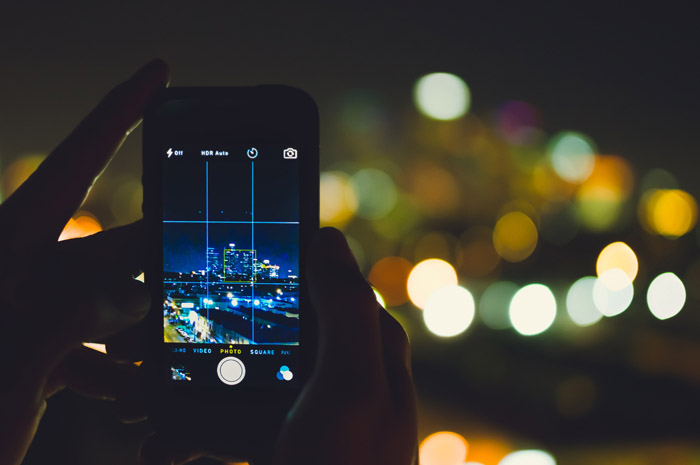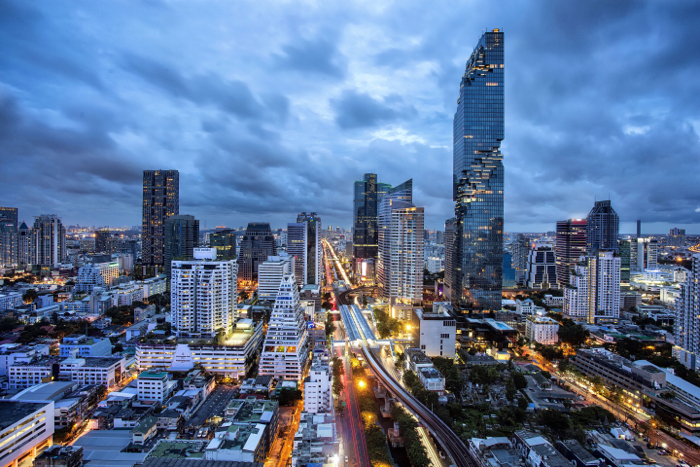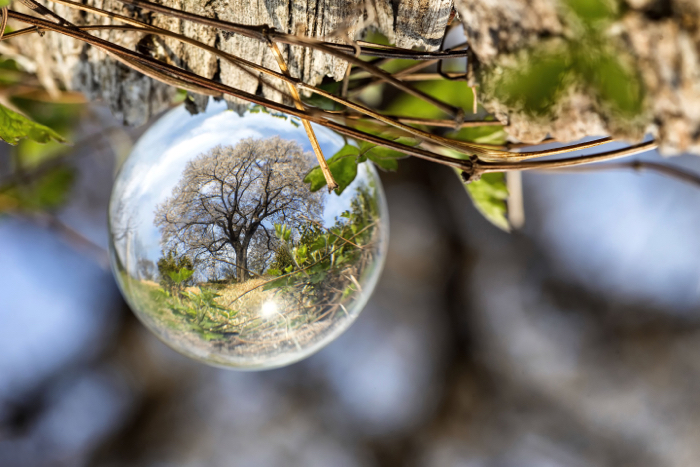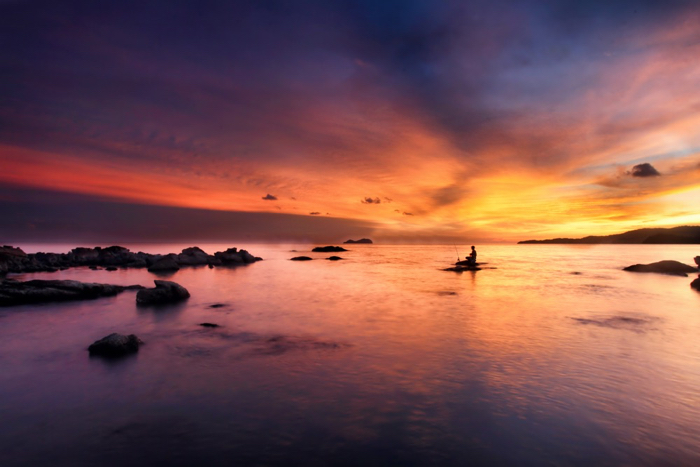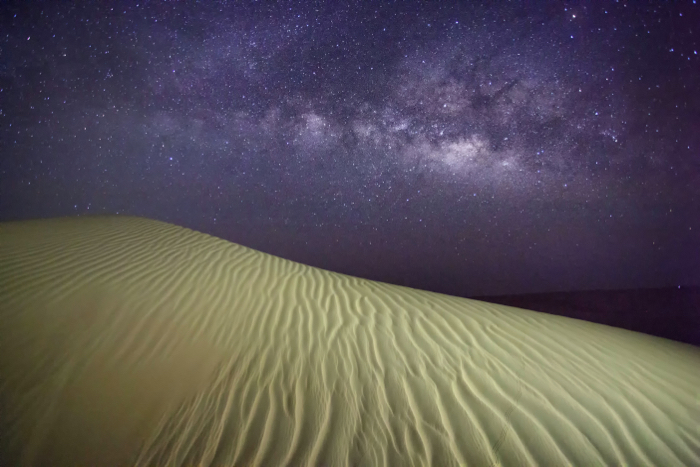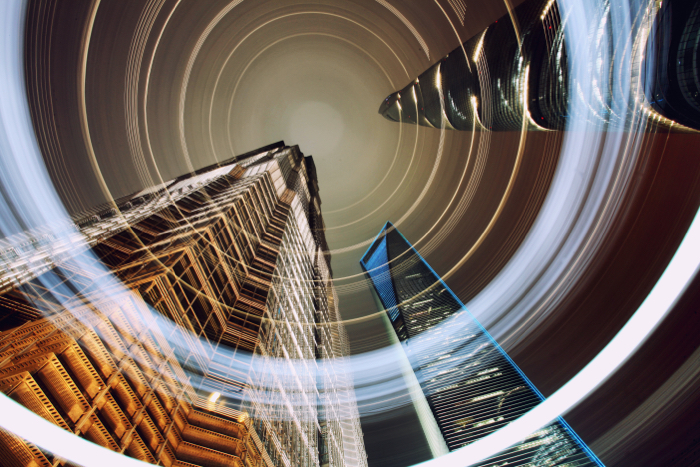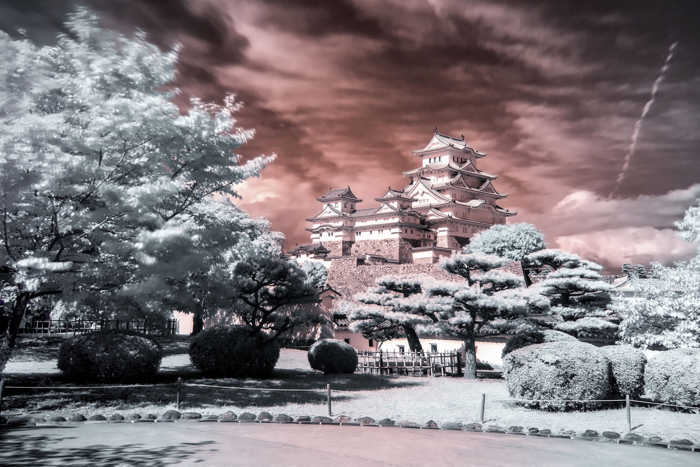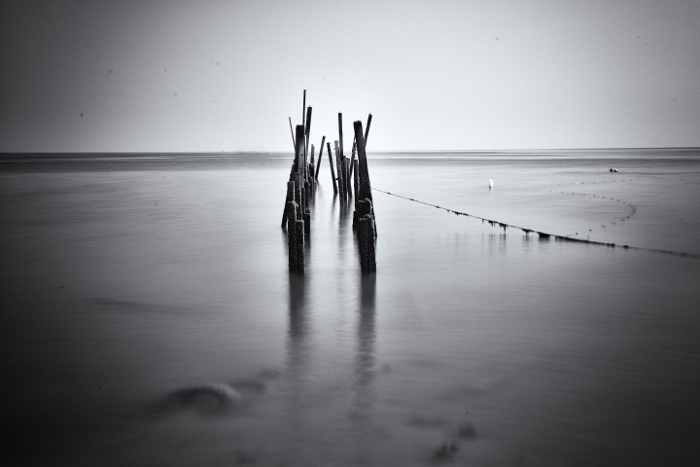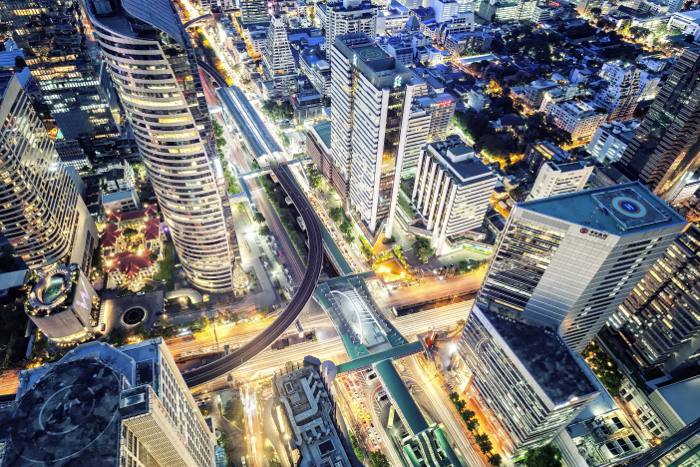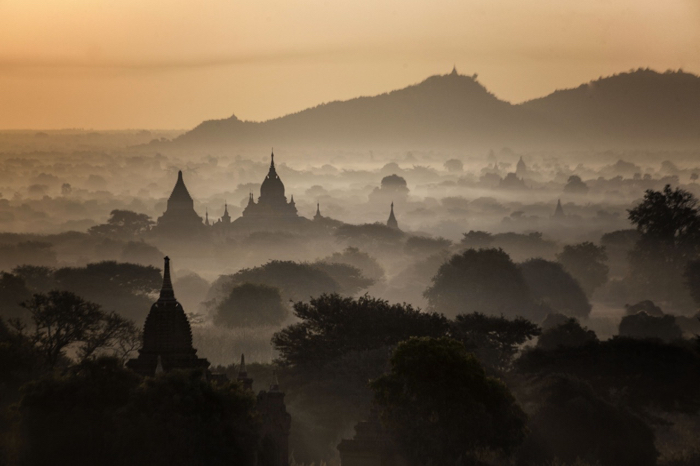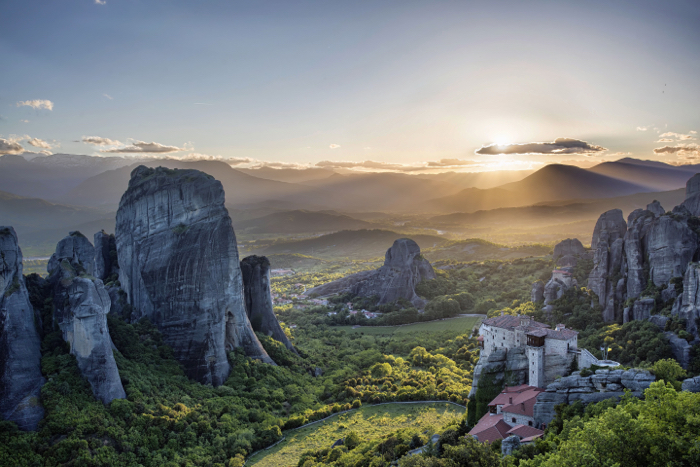30 Unique Animal Photography Examples to Inspire You
30. Take Glowing Photos During Golden Hour
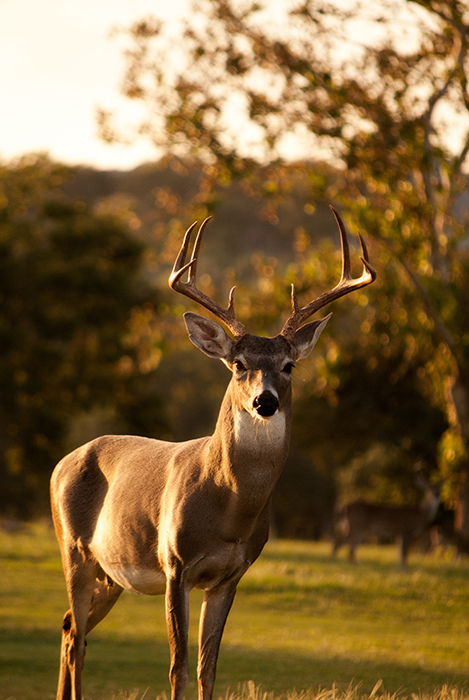 There’s a lot you can do with animal photography during golden hour.
There’s a lot you can do with animal photography during golden hour.
Golden hour occurs after sunrise and before sunset. You can use it to take photos from all kinds of angles. All without worrying about overexposing or underexposing your photos.
29. Use Window Light to Take Moody Photos of Your Cat
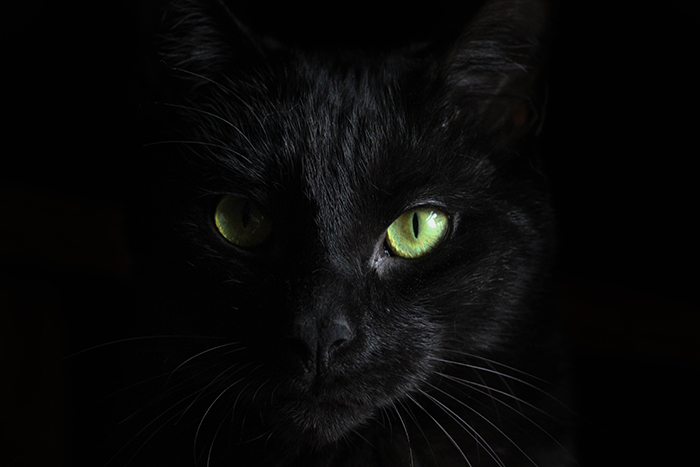 You don’t need a lot of professional equipment to take professional photos of animals. If you have a pet, you can practise by using window light.
You don’t need a lot of professional equipment to take professional photos of animals. If you have a pet, you can practise by using window light.
Instead of using direct window light, use different angles.
Side lighting, the one that lights half of your subject’s face, can create a beautiful gradient.
28. Focus on the Eyes to Make Your Photos More Expressive
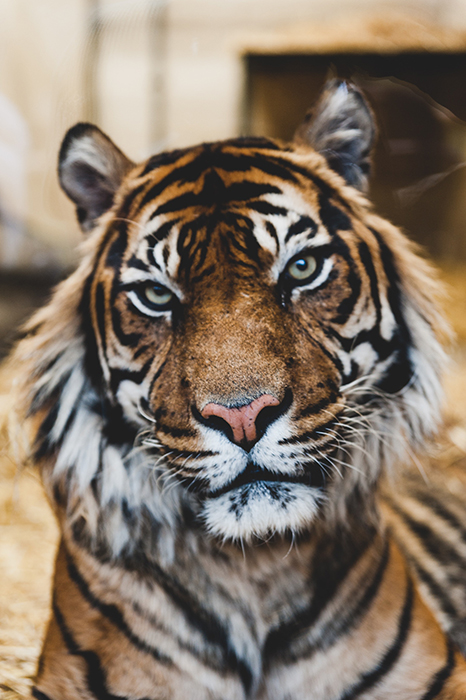 Just like portrait photography, animal photography relies on the eyes.
Just like portrait photography, animal photography relies on the eyes.
To take expressive photos, get on the animal’s level and focus on its eyes. For the best results, make sure the animal looks directly into the lens.
You can do this by capturing its attention with rewards or harmless sounds.
27. Use a Zoom Lens to Capture Unique Moments
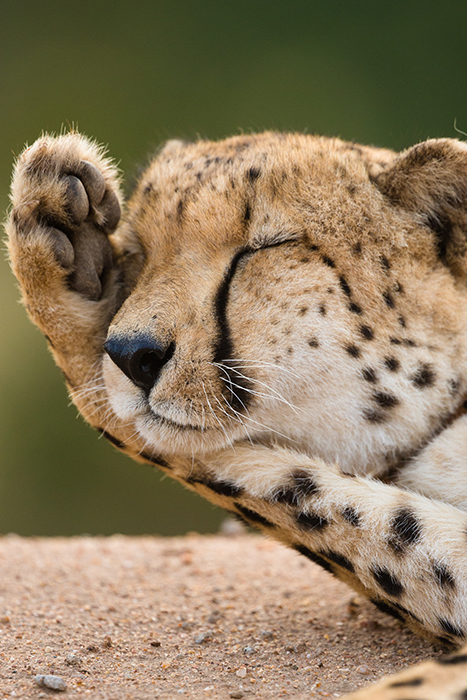 If you want to become a professional animal photographer, you need to invest in a zoom lens.
If you want to become a professional animal photographer, you need to invest in a zoom lens.
You can use zoom lenses to take sharp photos of animals from a distance.
This will come in handy if your subject is too far away to catch up with or if they’re dangerous.
26. Use Shutter Speed to Take Incredible Action Shots
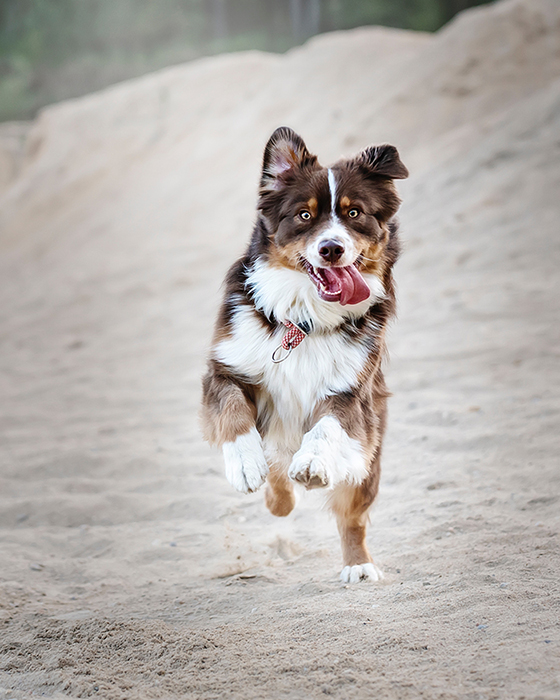
To take detailed photos of your pet in action, you need to familiarise yourself with shutter speed. Shutter speed will determine how quickly your camera takes a photo.
The right shutter speed will allow you to take all kinds of action shots.
This is ideal for owners of energetic pets who can’t sit still for a photo!
25. Put the Focus on Your Subject Using Aperture
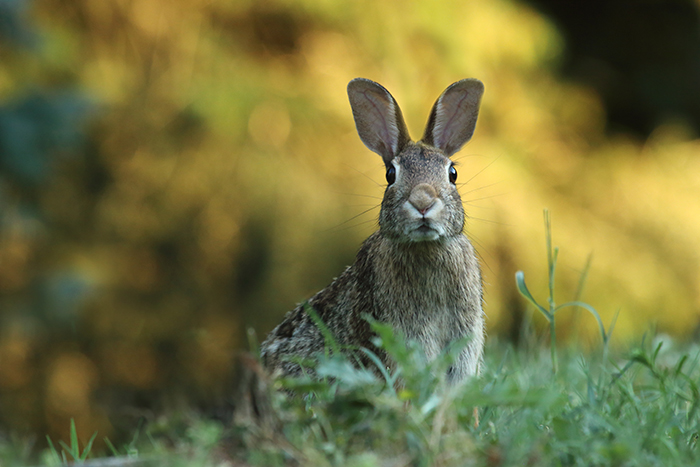 A blurred background like the one above is easy to achieve.
A blurred background like the one above is easy to achieve.
Look for a number on your lens. It might say something like f/1.8, f/5-6.3, etc. This is the largest possible aperture you can work with.
The larger the aperture (or the smaller the number), the blurrier you can make your backgrounds.
An aperture of f/1.2, for example, will result in a soft backdrop like the one above.
This will help you blur out distractions and focus on your subject.
24. Document the Relationship Between Animals to Make Your Photos More Emotional
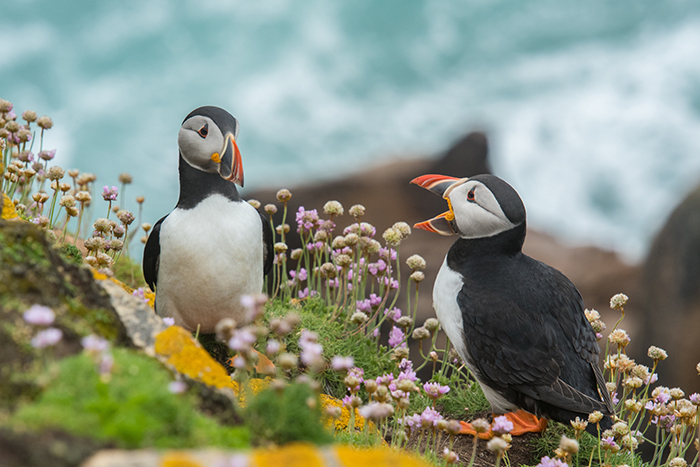 No photo is complete without a story. To make your animal photos more emotional, tell stories through your subjects.
No photo is complete without a story. To make your animal photos more emotional, tell stories through your subjects.
The best way to do this is to photograph them interacting with one another.
For example, it seems like the Atlantic Puffins in this photo are talking to each other.
Finding moments like this isn’t easy, but it will help you find potential in simple interactions.
23. Find Patterns and Similar Colours in Simplicity
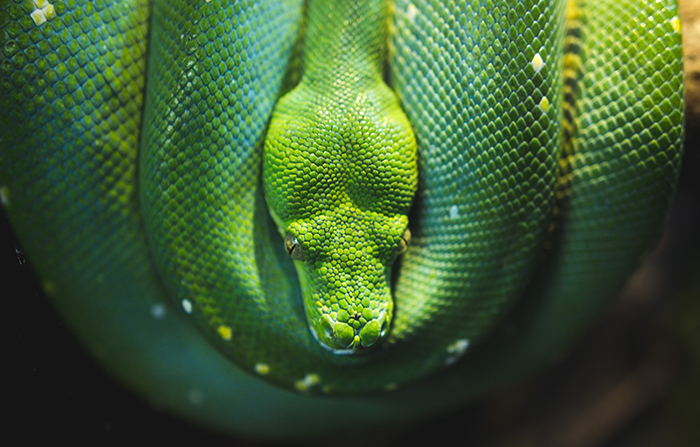 Some of the best animal photos are simple and pleasing to the eye.
Some of the best animal photos are simple and pleasing to the eye.
Most animals have some kind of beautiful pattern that deserves to be photographed in the best light.
Find these patterns, colors, and lines to take breathtaking images.
22. Take Photos of Animals with Their Favourite Things
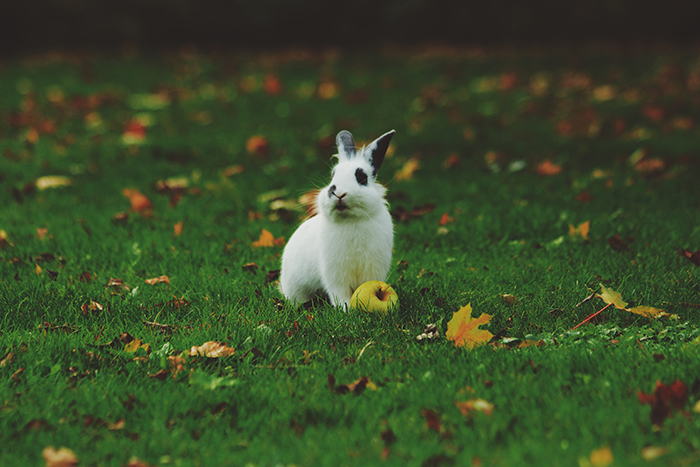 Every
animal has something it loves, be it a specific food or a toy.
Documenting this is an easy way to make your animal portraits more
personal and interesting to look at.
Every
animal has something it loves, be it a specific food or a toy.
Documenting this is an easy way to make your animal portraits more
personal and interesting to look at.
If the animal is a pet, its favorite item will also make it feel comfortable in front of your camera.
21. Take an Epic Group Photo of Horses Using a Wide-Angle Lens
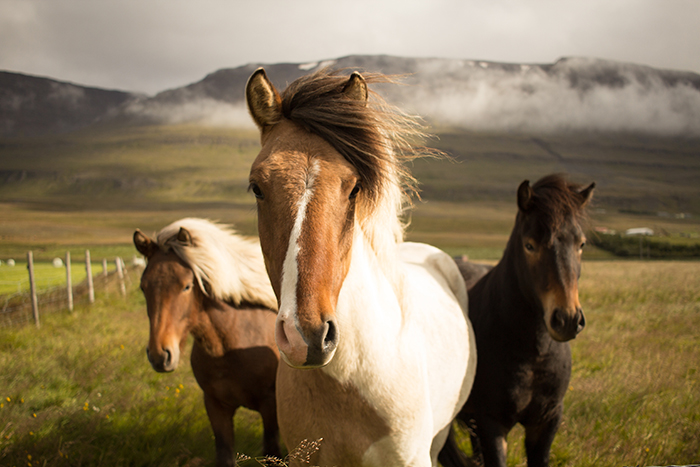 Horses are majestic creatures, especially when they’re together.
Horses are majestic creatures, especially when they’re together.
Take photos of them using a wide-angle lens. This will let you capture as many details and surroundings as possible.
20. Capture an Animal Mid-Yawn for Amazing Results
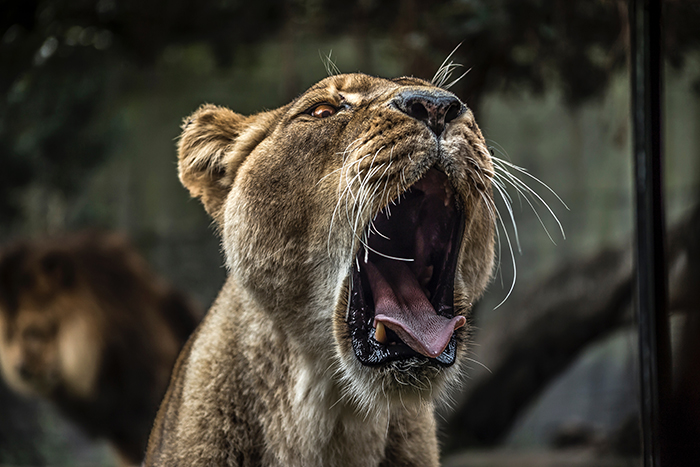 Yawns can help you take hilarious or impressive photos of animals.
Yawns can help you take hilarious or impressive photos of animals.
To sharply capture something as quick as a yawn, you need to be familiar with shutter speed. Check out idea #25 to find out more.
19. Take Photos of Animals to the Next Level Using Your Editing Skills
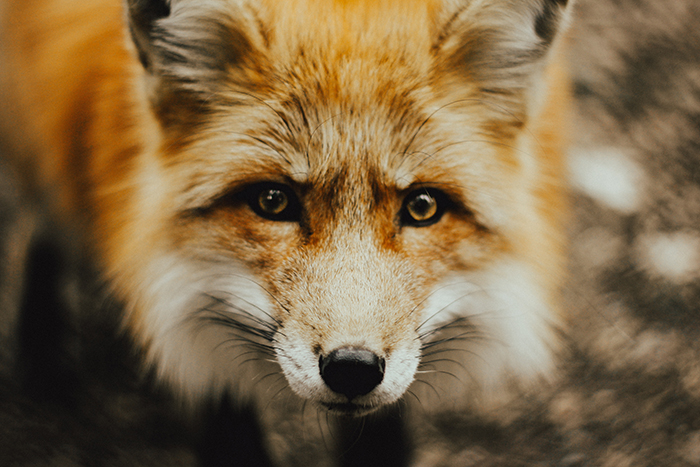 Editing
is an essential part of any photography style. Even if you don’t like
Photoshop, you can still use it to enhance your photos even a little.
Editing
is an essential part of any photography style. Even if you don’t like
Photoshop, you can still use it to enhance your photos even a little.
Editing is great for restoring shadows in dark photos. You can mute highlights in overexposed shots and correct distracting colors.
18. Take Stunning Detailed Photos of Highland Cattle
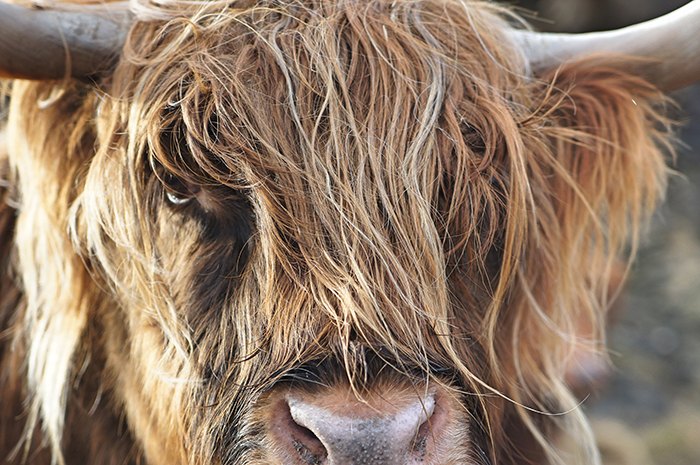 Using a zoom or macro lens, you can take amazing photos of Highland Cattle.
Using a zoom or macro lens, you can take amazing photos of Highland Cattle.
These creatures are known for their majestic horns and furry bodies. These features are great for taking otherworldly photos.
17. Interact With Animals to Take Unique Outdoor Photos
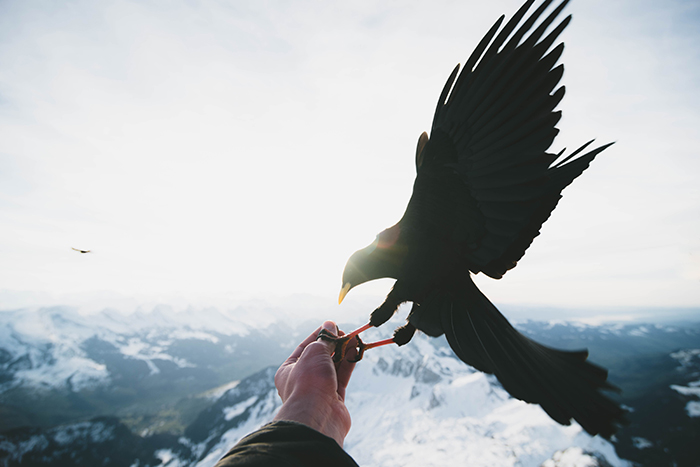 Why
not include yourself in some animal photos? Photos of animals
interacting with people or their owners are unique and heartwarming.
Why
not include yourself in some animal photos? Photos of animals
interacting with people or their owners are unique and heartwarming.
Make sure the animals you’re interacting with won’t bite your hand off!
16. Take Photos Using Backlight to Create Magical Silhouettes
 Sometimes,
details aren’t that important. To capture an atmosphere, take photos
using backlight. This is light that shines behind your subject.
Sometimes,
details aren’t that important. To capture an atmosphere, take photos
using backlight. This is light that shines behind your subject.
This will create a silhouette that you can use to emphasise specific shapes.
15. Take Perfect Animal Photos Using Foregrounds
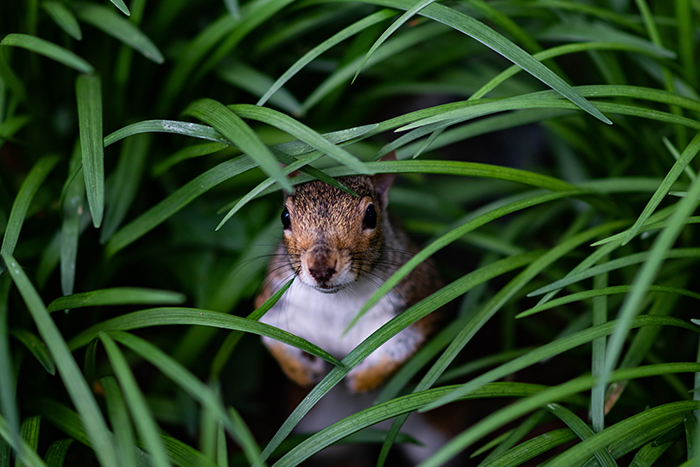 Foregrounds are located close to the camera lens. With a large aperture, they usually get blurred out.
Foregrounds are located close to the camera lens. With a large aperture, they usually get blurred out.
This makes them the perfect tools for simple yet eye-catching animal photos.
Use simple foregrounds, like grass and branches. These will add depth to your photos and put the spotlight on your subject.
14. Take Professional Photos of Horses Using Natural Light and a Black Background
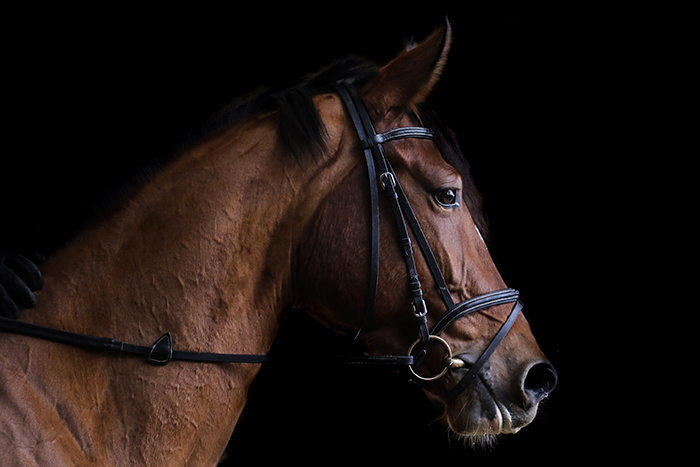 A
black background can make any photo look professional or moody. One of
the best things about black backgrounds is that they’re affordable and
very easy to set up!
A
black background can make any photo look professional or moody. One of
the best things about black backgrounds is that they’re affordable and
very easy to set up!
This is perfect for horse photography, which often revolves around elegance and strength.
13. Use a Macro Lens to Photograph Your Pet’s Eyes
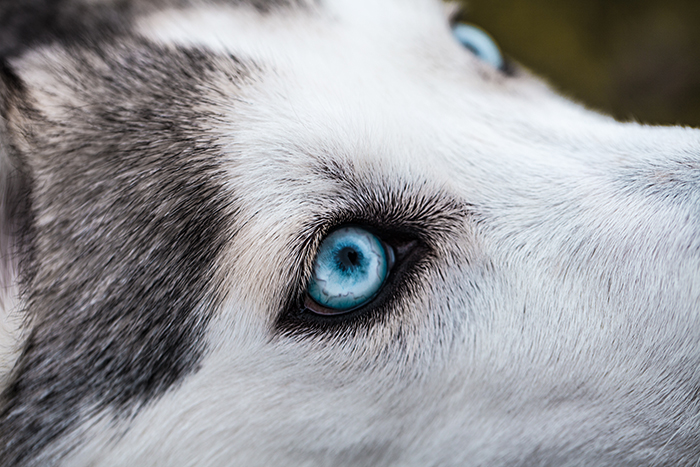
Animal eyes are so detailed. It’s impossible not to take unflattering photos of them. You can use a macro lens for your camera or phone to take amazing photos of eyes.
You can even turn this into a project where you photograph animal eyes exclusively.
12. For Sharp Animal Portraits, Use Manual Focus
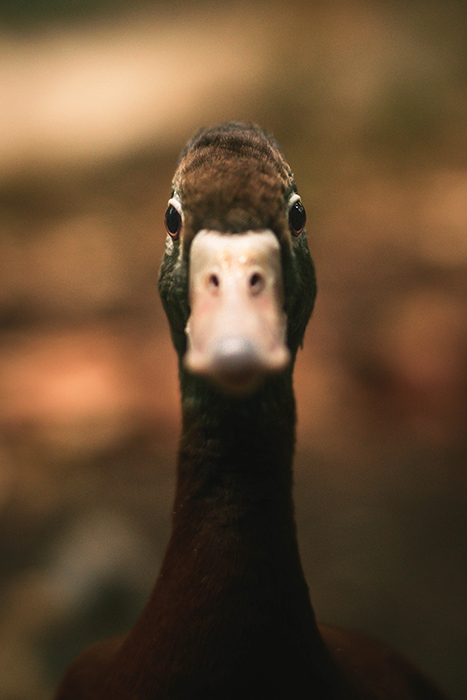 If you used autofocus to photograph the duck in the picture above, your camera would probably focus on the beak.
If you used autofocus to photograph the duck in the picture above, your camera would probably focus on the beak.
I recommend using manual focus when you want the sharpest results possible. Especially when you’re working with calm animals like ducks and turtles.
11. Have an Adorable Outdoor Photo Shoot With Your Pet
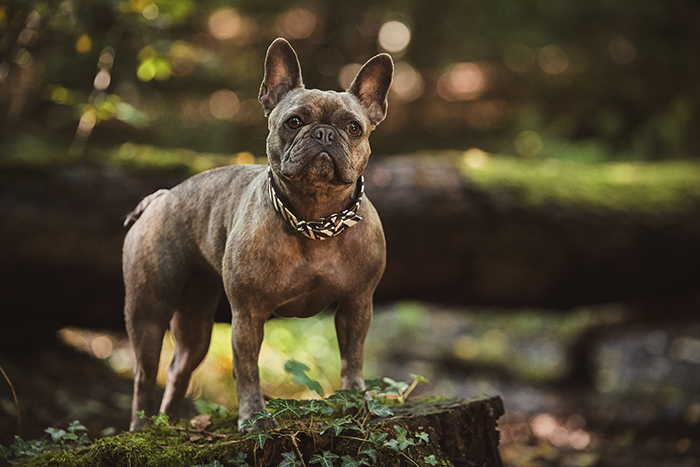 You don’t need to go far to improve your animal photography.
You don’t need to go far to improve your animal photography.
If you have a pet, practice by having photoshoots with it as often as possible.
Shoot outdoors to get better at working with a variety of natural light.
10. Use Unusual Angles to Take Outstanding Animal Portraits
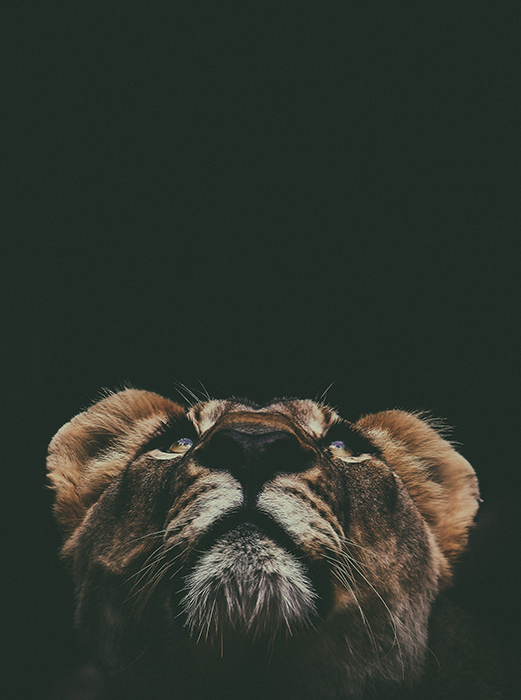 Animals look good from every angle. Feel free to experiment with different points of view.
Animals look good from every angle. Feel free to experiment with different points of view.
The more unusual the angles, the more unique your photos will be.
9. Slightly Desaturate Your Photos to Put the Focus on Your Subject
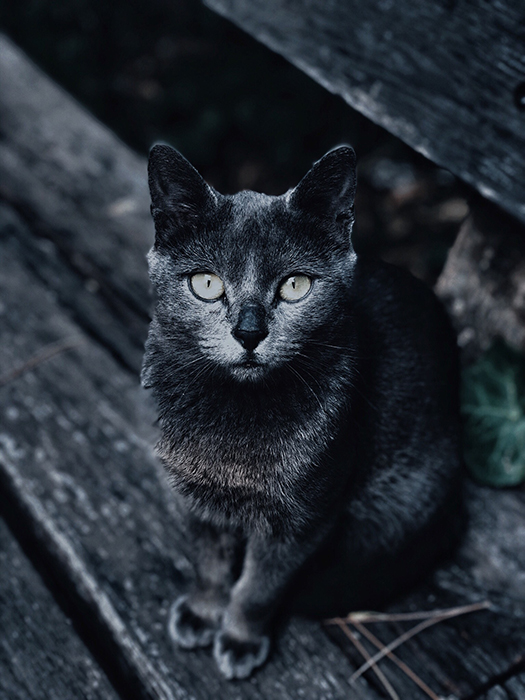 Some
locations are overly colorful. This can make it difficult to make an
animal stand out. This doesn’t mean you can’t shoot in those locations.
Some
locations are overly colorful. This can make it difficult to make an
animal stand out. This doesn’t mean you can’t shoot in those locations.
You can use your editing program to desaturate your entire image. Or you can make specific colors stand out less.
8. Take Funny Photos of Your Pet Sleeping in Its Favourite Place
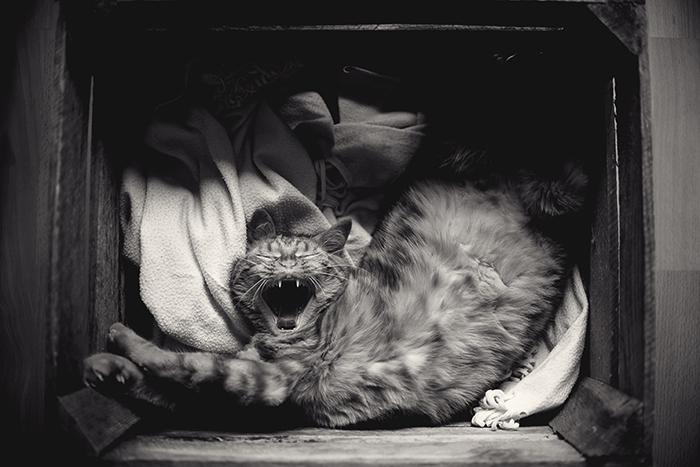 Funny
animal photos are a necessity. One of the most efficient ways to take
funny photos is to use your animal’s sleeping patterns as inspiration.
Funny
animal photos are a necessity. One of the most efficient ways to take
funny photos is to use your animal’s sleeping patterns as inspiration.
Some animals, especially cats, have unusual sleeping preferences that are the perfect excuse to take great photos.
7. Use a Disposable Camera to Take Amazing Underwater Photos
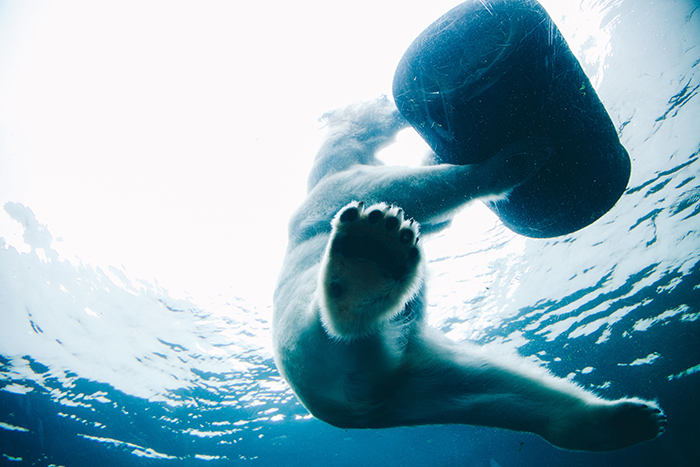 It’s unlikely that you live in a place with constant access to polar bears. But you can still take impressive underwater photos of different animals.
It’s unlikely that you live in a place with constant access to polar bears. But you can still take impressive underwater photos of different animals.
Disposable underwater cameras cost as little as $15. These can quickly improve your analog photography.
6. Take Enchanting Photos of Your Dog in an Outfit
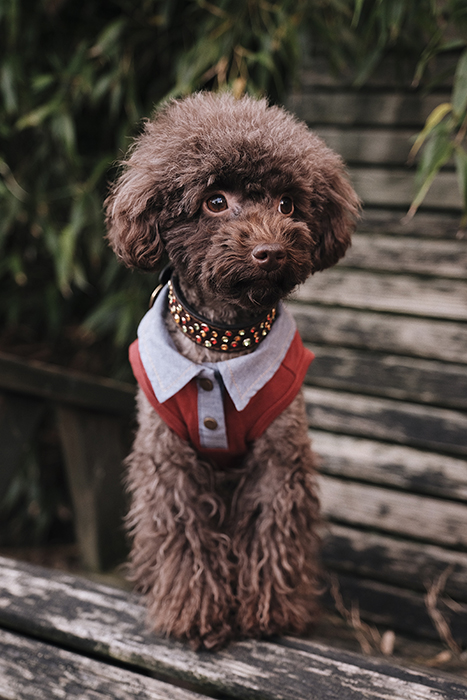 Sometimes, all you need is a collection of adorable dog photos. Thanks to the uniqueness of different dog outfits, it’s easy to take stunning photos of the same dog.
Sometimes, all you need is a collection of adorable dog photos. Thanks to the uniqueness of different dog outfits, it’s easy to take stunning photos of the same dog.
This will probably not give you photos worthy of being published in National Geographic. But you’ll get better at using light and take some cool Instagram images.
5. Take Funny Closeups Using a Wide-Angle Lens
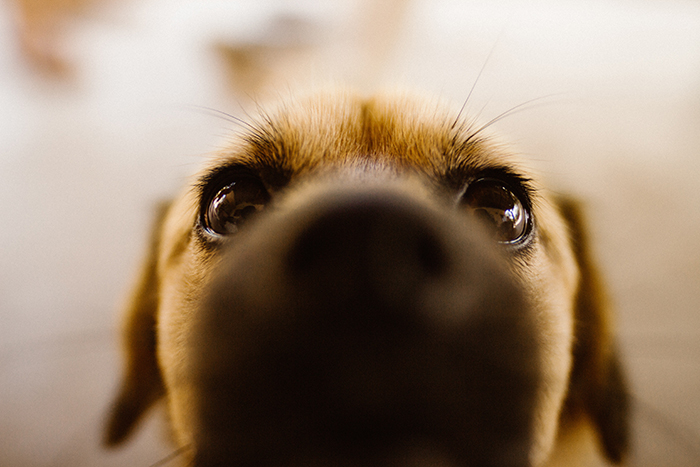 Another way to make the most of animal photography is to take funny closeups.
Another way to make the most of animal photography is to take funny closeups.
To do this, all you need is a wide-angle or macro lens. Use one that will capture both an animal’s eyes and nose.
Get as close to the animal as possible, making sure its eyes are in focus.
4. Improve Your Candid Photography by Going out and Finding Interesting Situations With Animals
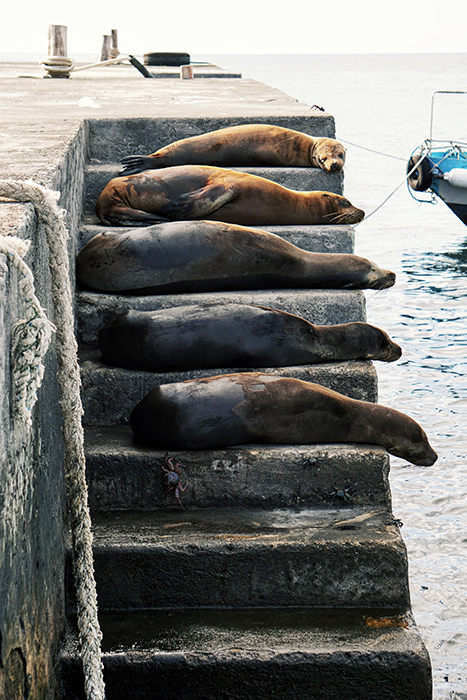 Finding unique situations isn’t easy, but it’s definitely a great excuse to spend more time outdoors.
Finding unique situations isn’t easy, but it’s definitely a great excuse to spend more time outdoors.
Observe different animals and their quirks. You might come across something as interesting as the sleeping seals in the photo above!
3. Experiment With Different Formats to Make Your Animal Portraits More Interesting
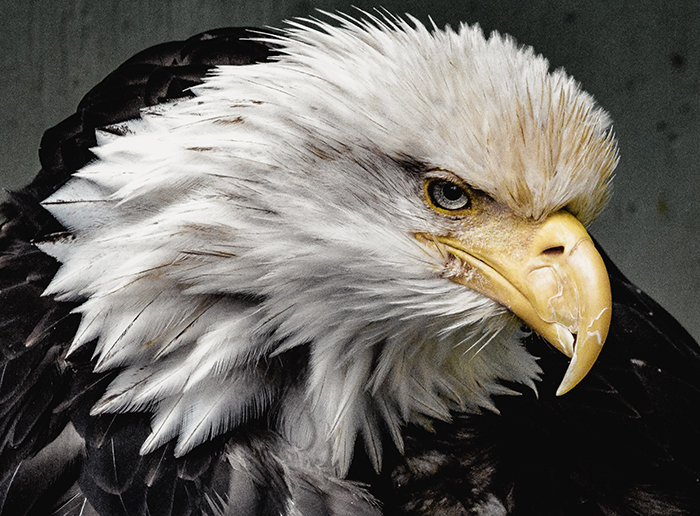 You can make a simple photo look more interesting by cropping or enlarging it. Some photos look better as panoramas. Others look more appealing when they’re cropped.
You can make a simple photo look more interesting by cropping or enlarging it. Some photos look better as panoramas. Others look more appealing when they’re cropped.
Experiment with different formats to find a few that enhance your compositions.
2. Convert Your Photos to B&W for Eye-Catching Results
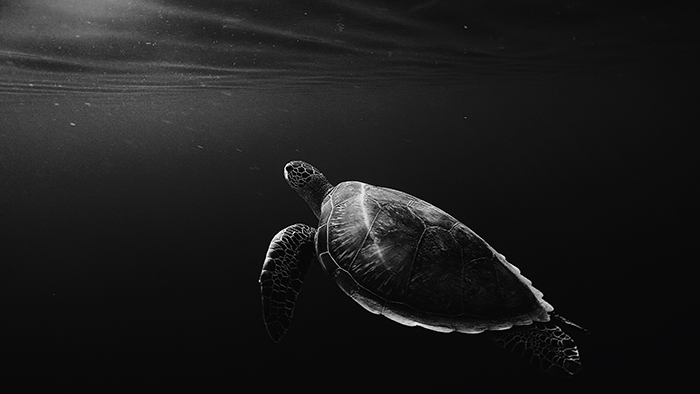 If slight desaturation isn’t enough, you can shoot in, or convert to, black & white.
If slight desaturation isn’t enough, you can shoot in, or convert to, black & white.
High contrast photos look even more amazing in b&w. If your photos are flat, make sure you add contrast to them before you convert them to b&w to avoid unflattering results.
1. Capture Your Pet’s Quirks to Make Your Photos Both Adorable and Unique
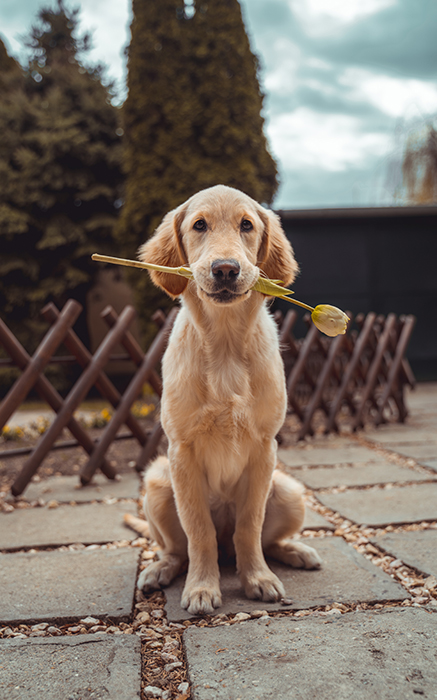 In addition to having weird sleeping patterns, animals have a bunch of unique quirks.
In addition to having weird sleeping patterns, animals have a bunch of unique quirks.
Photograph your pet carrying unusual things, playing with “toys” that aren’t mean to be played with, and running around in their favorite place.
You can take this further by taking a self-portrait with them!
Animal photography is open to animal lovers of all kinds.
Whether you’re a cat person, a dog lover, or a wildlife photography enthusiast, you can enjoy this genre whichever way you like without missing out.
---------------------------------------------------------------------------------------------------------------------
PHOTOGRAPHY FREEBIE:
How to make money with your Photography even if you're not a Pro.
Copy & paste this link into your browser, click ENTER, and enjoy:
https://mrdarrylt.blogspot.com/2020/01/how-to-make-500-month-from-your.html
or
https://www.photography-jobs.net/?hop=darryl54
----------------------------------------------------------------------------------------------------------------------
Visit me on Facebook and post your pictures.
https://www.facebook.com/Darryl-T-363867387724297/Need a camera? Try this link (Tri State Camera) for discounted prices:
https://ebay.to/2Smb1ho
